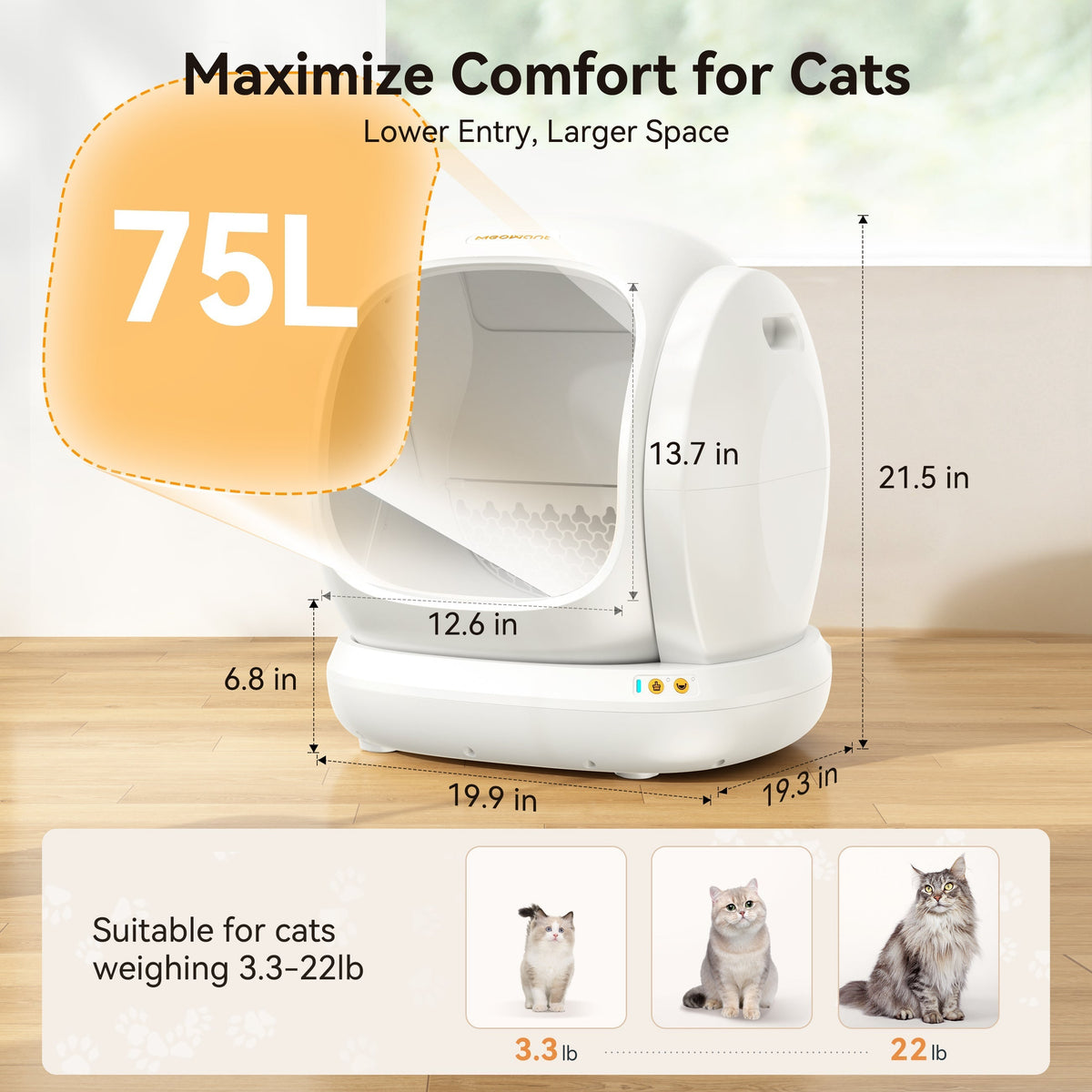Can Cats Share a Litter Box?

One of the most common questions cat owners ask is, Can two cats share a litter box? While it may seem convenient to have one litter box for multiple cats, its essential to understand feline behavior and hygiene needs before making that decision. Cats are territorial creatures, and their bathroom habits play a significant role in their overall well-being. A poorly managed litter box situation can lead to stress, behavioral issues, and even health problems.
In this article, well explore whether cats can comfortably share a traditional or self-cleaning litter box and what solutions work best for a harmonious multi-cat home.
Part 1. Can Two Cats Share a Litter Box?
The golden rule in the cat world is one litter box per cat, plus one extra. So, for two cats, you'd ideally have three boxes. But why is this recommended?
Territorial issues: Cats are naturally territorial, and some may guard the litter box, blocking the other cat from using it.
Hygiene concerns: A single litter box for multiple cats fills up quickly, leading to strong odors and unsanitary conditions. Fastidious cats may refuse to use it if it's not clean.
Stress or behavioral problems: A dirty or contested litter box can cause stress, leading to inappropriate elimination (like peeing outside the box) or even urinary tract issues. A stressed cat is not a happy cat.
Part 2. Can Two Cats Share a Self-Cleaning Litter Box?
Now, what about self-cleaning litter boxes? Can 2 cats share a self-cleaning litter box? Self-cleaning litter boxes can be a game-changer for multi-cat households, they automatically remove waste, keeping the litter fresh and reducing odor. But do they work for multiple cats?
The Benefits of a Self-Cleaning Litter Box for Multiple Cats:
✅Since waste is scooped out automatically, odors don't have time to build up, making the environment more pleasant for both cats and humans.
✅Traditional litter boxes require constant scooping, but self-cleaning ones ensure the litter remains fresh after every use. This can be especially beneficial when two cats are sharing.
✅Less daily maintenance means more time for cuddles instead of cleanup. Plus, many self-cleaning litter boxes come with monitoring apps that help track your cats'bathroom habits, which is useful for health monitoring.
If you're considering a self-cleaning litter box for multiple cats, the Meowant SC02 Self-Cleaning Litter Box is a top choice. Key features include:
⭐75L Large Space: Spacious enough for multiple cats, providing comfort and reducing stress.
⭐Automatic Cleaning: Keeps the box clean without manual scooping.
⭐Health Monitoring: The Smart app allows owners to track usage and detect any changes in their cats' bathroom habits.
⭐Quiet Operation: The noise less than 38dB which reduces noise, making it less intimidating for cats.
Potential Downsides:
- Self-cleaning litter boxes are significantly more expensive than traditional ones. However, for many cat owners, the convenience outweighs the price.
- Some cats may be wary of the noise and mechanics. It may take time for them to feel comfortable using it.
So, can two cats share a self-cleaning litter box? If you choose the right one, like the Meowant Self-Cleaning Litter Box. Yes, it can work. However, it's still a good idea to have an extra litter box to prevent potential conflicts.
Part 3. Tips for Managing Litter Boxes for Multiple Cats
If you’ve got multiple cats, managing their litter box situation can mean the difference between a peaceful home and a territorial war zone. Here’s how to keep things running smoothly:
1. Follow the "N+1 Rule": The golden standard? One box per cat, plus an extra. Two cats = three boxes. This prevents one dominant cat from blocking access and gives each feline their own "bathroom" space.
2. Spread Out the Boxes: Avoid clustering all the boxes in one spot. Cats may avoid a box if they feel cornered or threatened by another cat.
3. Clean Litter Boxes Daily: Cats are clean creatures. A dirty box is the fastest way to get them to pee on your laundry instead. Scoop at least once a day (twice is even better) and do a full litter change weekly.
4. Watch for Warning Signs: Keep an eye on signs of stress, such as avoiding the litter box, excessive grooming, or inappropriate elimination. Adjust the setup if needed.
5. Adapt to Their Preferences: Some cats like covered boxes; others feel trapped. Some prefer fine litter; others hate scented varieties. Pay attention to what works best for your cats and adapt as necessary.
Final Thoughts: Should Cats Share a Litter Box?
While some cats might tolerate sharing, it’s usually not the best long-term solution. Territorial instincts, hygiene issues, and stress can turn a shared box into a problem. Your safest bet? Multiple cat litter boxes, whether traditional or self-cleaning, strategically placed and kept spotless.
If you opt for a self-cleaning litter box, it can make maintenance easier, but choosing a high-quality option like Meowant is key. Ultimately, understanding your cats’ preferences and behavior is the best way to ensure a harmonious, stress-free environment for everyone in the house.
